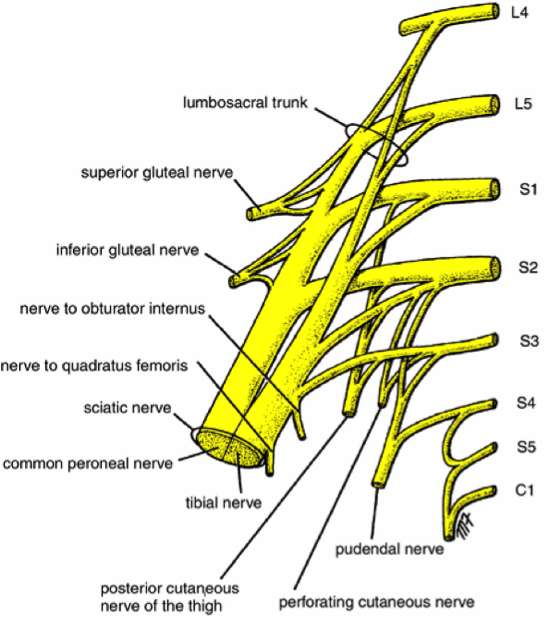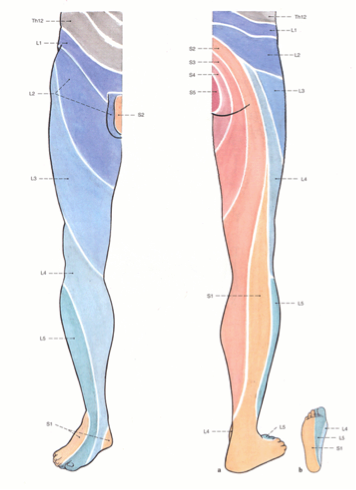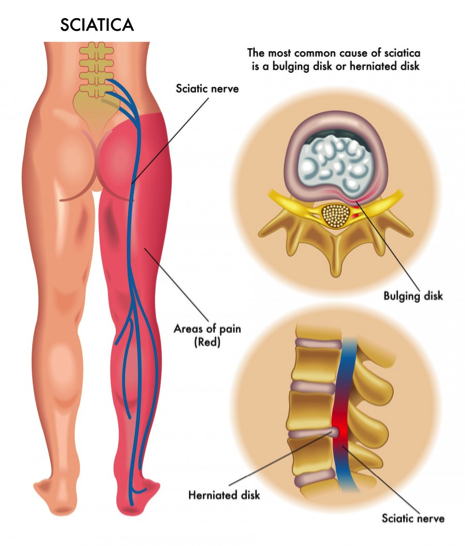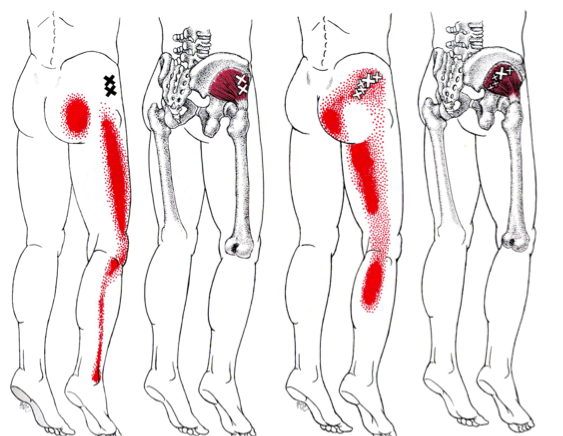Sciatic nerve pain: symptoms, causes and treatment options
Thu,Mar 23, 2017 at 12:15PM by Laura Kinmont
Those who have experience sciatic nerve pain will long remember the pain, discomfort and electric shocks shooting through their the back or buttocks, often radiating past the knee into the foot.
What is the sciatic nerve?
The sciatic nerve branches from lumbar and sacral plexus:
// Roots: L4, L5, S1, S2, S3
// Has two branches: tibial and common fibular
// In total, the sciatic nerve innervates the muscles of the posterior thigh and the entire lower leg and foot
What are the symptoms of sciatic nerve pain?
// Sharp, electric-like sensation down back of leg into the ankle and underside of foot
// Numbness, tingling and/or burning in hip and down back and side of leg to ankle and foot
// Weakness or difficulty moving leg, foot and/or toes
// Pain can vary from infrequent and irritating to constant and incapacitating
What are the causes of sciatic nerve pain?
// Tightness in lumbar musculature, gluteals, piriformis causing postural changes
// Piriformis Syndrome – tightness and or spasm of the piriformis muscle (can occur with or without neural symptoms)
// Disk bulge (most common) or herniation of the lumbar spine
// Trauma or injury to Lumbar spine (eg. fracture of lumbar vertebrae, facet or sacrum or inflammation around the spine)
// Stenosis of the lumbar spine – narrowing of the bony channel where the spinal cord lies
// Pregnancy – postural changes in lumbar spine
Treatment options for sciatic nerve pain
Release muscles
// Lower thoracic and lumbar erector spinae
// Psoas
// Gluteals (minimus>medius)
// Piriformis
// Quadratus lumborum
// Quadriceps
// Hamstrings
// Not limited to the above muscles only – depends on presentation
Remedial massage, musculoskeletal therapy or myotherapy can help sciatica by easing pressure around the sciatic nerve and its branches by releasing muscles around the lumbar spine, pelvic and thigh regions.
Important to note regarding sciatic nerve pain
Note that if there is any disk, nerve or lumbar spine injury/trauma, massage cannot fix these problems and can only help to relieve some of the associated symptoms. Remedial massage should be used in conjunction with other allied health professionals depending on severity.
Also important to note that some people may present with pain pattern similar to that of sciatica and be confusing this with true sciatica. This could be a gluteus minimus trigger point mimicking the sciatica pain pattern (see below image). The difference is that the pain does not reach the foot and presents as an ache as opposed to a sharp, burning or numb sensation. This is treated by trigger point therapy and massage directly to the gluteus minimus muscle.
Laura Kinmont practices her profession of musculoskeletal therapy and remedial massage with Body Organics in Brisbane. Laura completed her Bachelor of Health Science (Musculoskeletal Therapy) degree at Endeavour College of Natural Health in 2008. Laura provides treatments in remedial massage, musculoskeletal therapy, pregnancy massage, cupping, sports massage, myofascial release as well as joint mobilisations.
 0
0 



